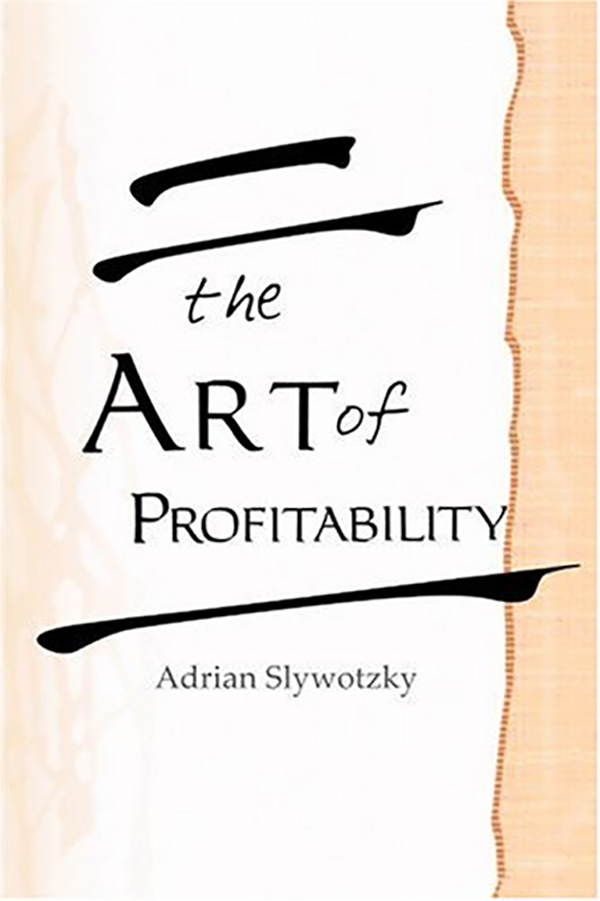The Book in Three Sentences
There are many ways to make profit and it is unlikely that your business does all of them. People will pay different prices for the same thing in different situations (think: Coke in the grocery store vs. Coke in a nice restaurant). Good profit models are easy to brainstorm and hard to execute.
The Art of Profitability summary
This is my book summary of The Art of Profitability by Adrian Slywotzky. My notes are informal and often contain quotes from the book as well as my own thoughts. This summary also includes key lessons and important passages from the book.
- There are many ways to make profit and it is unlikely that your business all of them.
- Most people don't care enough about profitability.
- Always do the math yourself. Too many people take numbers from unreliable sources.
- There are 4 levels of learning: Awareness, Awkwardness, Application, Assimilation
- Customer-Solution Profit: Know your customers incredibly well and create a solution specifically for them.
- Pyramid Profit: Different customers have different price sensitivities. This profit model works with that. Multiple tiers: Firewall (low-priced tier at bottom that can't reasonably be underpriced by a competitor), Next tier (mid-range products that you upsell and cross-sell to from the low-priced tier), Premium tiers (higher-priced products that loyal customers buy)
- Multi-Component Profit: Same product, several businesses. People will pay different prices for the same thing in different situations (think: Coke in the grocery store vs. Coke in a nice restaurant).
- Switchboard Profit: Act as a power broker between buyers and sellers. Only works well if you can get 15 percent of the market or more because deals flow in your direction given your network on both sides of the deal.
- Time Profit: Be faster, be newer, be innovative. Be there before everyone else and exploit the advantage for as long as you can.
- Blockbuster Profit: Have a huge product launch. Think movies, books, and pharmaceutical product launches.
- Profit-Multiplier Model: Take one skill and make money from it in many ways. (e.g. Disney turns movies into tee shirts, amusements parks, toys and more.)
- Entrepreneurial Profit: Operate lean and avoid all the wasted resources that major corporations can afford to have. We can't afford to “subside non-entrepreneurial behavior.”
- Specialist Profit: Lower costs because of better knowledge. Higher price because of better knowledge and stronger reputation.
- Installed Base Profit: Initial sales margins are slim, but money is made on the follow up sales. (Think: revenue from cars vs. revenue from car repairs.)
- De Facto Standard Profit: The more people who buy, the more valuable your become. Network effects drive your profit up.
- Brand Profit: Pay enough for your brand and you win because people know you. (Personal note: I hate this one.)
- Specialty Product Profit: Develop new niche products and create them with above average materials, then charge a premium price.
- Local Leadership Profit: Be everywhere and then every store is like a billboard (Starbucks, Walmart, etc.)
- Transaction Scale Profit: Specialize in high paying, highly profitable markets. (Think: a real estate agent who only sells $1M+ homes.)
- Value Chain Position Profit: Certain places in the value chain are incredibly profitable while others are not. Look for these key control points.
- Cycle Profit: Adjust rates based on the cycle. (Think: Travel industry rates for low, mid, and high season.)
- After-Sale Profit: Drive profit with upsells, cross-sells, and supplemental products. Accessories, replacement parts, etc.
- New Product Profit: There is a profit explosion at the beginning of a product's life.
- The Profit Parabola: “The total profit earned by all players in a market goes up, peaks, and comes back down to zero.” (i.e. Get in on the first half when profit is rising, not the last half.)
- Relative Market Share Profit: Companies with higher market share tend to be more profitable.
- Experience Curve Profit: Experience in serving the market results in lower transaction costs and, eventually, higher profit.
- Low-Cost Business Design Profit: The lower the costs of running your business, the higher your profit will be. You don't need high revenues to make high profit with a low-cost business. This is one of the reasons why digital businesses are so attractive.
- Big transactions are a function of relationships.
- Good profit models are easy to brainstorm and hard to execute.
